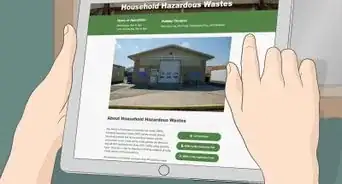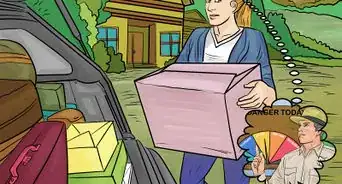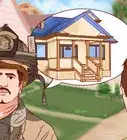This article was co-authored by wikiHow Staff. Our trained team of editors and researchers validate articles for accuracy and comprehensiveness. wikiHow's Content Management Team carefully monitors the work from our editorial staff to ensure that each article is backed by trusted research and meets our high quality standards.
There are 11 references cited in this article, which can be found at the bottom of the page.
This article has been viewed 45,202 times.
Learn more...
In many parts of the world, wildfires pose a serious and constant threat to residents in both urban and rural areas. There is not much you can do to predict when a fire will happen or the course it will take, but you can work to prepare your home and keep it safe from severe wildfire damage. By clearing hazards around your home, making sure you have fire resistant features in your house, and having a good plan of evacuation, you can help keep your home safe if a fire should ever strike.
Steps
Clearing Hazards Around Your Home
-
1Regularly cut your grass. If you have a lawn or a plot of land as part of your property, make sure that you cut your grass and clear out any brush regularly. Remove all dead or unhealthy plant life on a regular basis to minimize areas that could quickly catch fire and spread.
- Take a look at your lawn weekly to see if it needs trimming. Look for brown tips on blades of grass as an indicator of an unhealthy plant.
- Rake up and dispose of leaves, brush, tumbleweeds, and other dead plant matter as it enters your property. Do not allow it to sit or accumulate.
-
2Store wood safely. If you have lumber, firewood, or other timber around your property, store it securely in a fire resistant closed box or in a raised, open container with a fire resistant tarp as a cover. Do not store any lumber directly against the side of your house.[1]
- Fire resistant storage can be purchased from an outdoor specialty store, as well as online or at most home improvement stores.
Advertisement -
3Clear dead trees. Dead trees and scrub help a fire move faster, so it is important to remove them early and properly. If you notice a tree is browning and dying, cut the whole thing down and call your county to find out about disposal practices, or arrange for a local tree cutting company to come cut and haul the tree.[2]
- Be sure to have the stump removed, as well. All of the dead wood needs to be cleared from your property.
- If you live in an area where brush grows wild, remove dead scrub from your property regularly. Look around your property at least once a month and clear out any new brush that may have come in.
-
4Create a fire-free area. Using non-flammable landscaping such as rocks, stones, or synthetic deck planks, create a fire-free area for the first five feet around the circumference of your home. Remove all leafy and piney plants as well as wooden features such as trellises immediately next to the home, and instead lay down a landscape of fire-resistant material.[3]
- If you have the resources, you may consider having a deck or porch constructed around your home using fire-resistant materials.
- Xeriscape the area around your house using rocks, sand, and gravel as decorative features and low-moisture plants such as succulents and cacti.[4]
Refitting Your Home for Fire Resistance
-
1Choose the right roofing. Avoid flammable materials such as wood and shake shingles when putting a new roof on your house. Instead, opt for fire-resistant roofing materials rated appropriate to the fire risk in your area.[5]
- Contact a local roofing contractor to find out more about fire resistant roofing. Let them know, “I would like more information on making my roof safer to protect from potential wildfires.”
- Opt for a tiled or steel roof if possible.
-
2Invest in your window coverings. Even when closed, windows readily let extreme amounts of heat into your home during a fire. Help ward off ignition from heat in your home by investing in heat resistant drapes or curtains, as well as non-combustible shutters for your windows.[6]
- Temperature resistant window coverings can easily be found at home goods stores, as well as from specialty window treatment retailers in person and online.
- Pair heat resistant fabric with non-combustible shutters for the best results. The shutter close quickly from the outside, and can help lighten the burden of the fabric.
-
3Protect your vents. Most homes catch fires from embers, not from flames. Protect your home from interior ignition by installing ember resistant vents at all points where an ember could enter your home.
- Ember resistant vents are available through most home improvement stores. Depending upon your area, you may be able to find one readily or you may have to have the store order one for you.
Protecting Your Valuables From Fire
-
1Decide what is valuable. In a scenario where the physical structure cannot be saved, you can often still save your personal valuables as long as you have a good plan. The first step is deciding what is valuable. Consider what you own that you would not be able to replace if lost.[7]
- Important items often include computers or hard drives with personal work or data stored on them, identification documents like passports and birth certificates, deeds, titles, and ownership paperwork, valuable art or collections, and anything of personal value like family photo albums.
- Remember that this list should also include children, pets, and any other living thing that will not be able to successfully evacuate itself from your home.
- Consider your spatial limitations. If you must evacuate, you will likely do so in your own vehicle and in a restricted time period. Realistically think about how much can fit in there along with the people evacuating, and how much you can load in the five to ten minutes you will have.
-
2Keep valuables closely assembled. If you live in a high fire risk area, it may benefit you to keep all of the valuables you want to take with you near one another. Consider storing important documents in a single fire or folder, and keep other valuable items near that folder.
- Invest in an external hard drive to backup your computer, and keep the hard drive with the rest of your valuables.
- Likewise, consider making copies of family photos or other items of personal significance and storing them with your other valuables.
-
3Buy a safe. Invest in a fireproof safe to store your valuables in the event that a wildfire reaches your home. This way, if you do not have the chance to grab everything during an evacuation, your belongings are still secure and safe from the fire.[8]
- Such safes can be purchased online or through speciality retailers. In some areas, department stores and big box stores may also carry them.
Evacuating Your Home When Necessary
-
1Let authorities know. If you see a fire without fire crews in attendance, call your emergency numbers immediately. Let them know the location and severity of the fire, as well as what danger it poses to you and your home.[9]
- Never assume that a fire has been reported unless you see emergency services on site. Always report a wildfire.
-
2Evacuate sooner rather than later. The old and very young should be evacuated straight away as the wildfire gets stronger. As a rule, houses with people there to protect them will survive far better than those without anyone.[10]
- If you have a chance to evacuate when the wildlife gets serious, evacuate straight away. If you cannot evacuate you must stay at your home and strongly defend it with whatever resources you have, such as hoses and extinguishers.
-
3Take action quickly. Take action to evacuate once you know there is a fire in your area. If you know there is a fire in your area, don’t wait for the police call to evacuate. You don't want to be on the roads when the fire is near. They are dangerous and crowded during a fire emergency.[11]
- Put you and other people first before objects or animals. Many people get seriously injured from putting their belongings first. If you have the time, save what you can. But if not you will need to think about the safety of others in your household.
-
4Listen for updates. Keep in mind that just because the fire has passed doesn't necessarily mean you are out of danger. Keep an ear on the radio or TV for fire updates, and stay on the lookout for a flare up or a renewed ember attack.
- Have a local radio or TV station tuned to a news report at all times to track the progress of the fire.
Community Q&A
-
QuestionCould spreading a layer of sand on a wood deck protect it from embers?
 Community AnswerYes it can, for a very little while. You'd need to wet the deck first, and then wet subsequent layers of sand for anything that might have a chance at handling the multitude of embers from a wildfire.
Community AnswerYes it can, for a very little while. You'd need to wet the deck first, and then wet subsequent layers of sand for anything that might have a chance at handling the multitude of embers from a wildfire. -
QuestionAre there external fire protection systems available for houses in the US?
 Community AnswerYou could build a fire break, which would involve digging a trench or building a road around your property. If a fire breaks out, you can go to the break and burn the grass on your side if necessary to prevent the fire from jumping.
Community AnswerYou could build a fire break, which would involve digging a trench or building a road around your property. If a fire breaks out, you can go to the break and burn the grass on your side if necessary to prevent the fire from jumping. -
QuestionHow should I build a sprinkler system to protect my home against wildfires?
 Community AnswerA sprinkler system would not really work against a wildfire, but if you were to build it anywa,y heavy water is better and it should circle your whole home.
Community AnswerA sprinkler system would not really work against a wildfire, but if you were to build it anywa,y heavy water is better and it should circle your whole home.
Warnings
- If the fire brigade tells you to evacuate, do it without argument. There is a reason they are asking you to do this so listen to them.⧼thumbs_response⧽
- Drink water (and only water) during a fire emergency. It is easy to dehydrate. When you dehydrate you are a danger to yourself and others.⧼thumbs_response⧽
- Do not attempt to fight a fire yourself. If you know there is a fire in your area, evacuate immediately and allow the fire department to worry about the fire. Do not stay in your home unless specifically instructed.⧼thumbs_response⧽
References
- ↑ http://www.readyforwildfire.org/Defensible-Space/
- ↑ http://www.readyforwildfire.org/Dead-Tree-Removal/
- ↑ http://www.firewise.org/wildfire-preparedness/be-firewise/home-and-landscape/defensible-space.aspx?sso=0
- ↑ http://www.hgtv.com/design/outdoor-design/landscaping-and-hardscaping/design/xeriscape-design-ideas
- ↑ http://csfs.colostate.edu/wildfire-mitigation/protect-your-home-property-forest-from-wildfire/
- ↑ https://inhabitat.com/6-tips-to-protect-your-home-from-wildfires/
- ↑ http://articles.chicagotribune.com/2011-02-25/business/chi-fireprotect-your-prized-possessions-20110304_1_fire-safety-safe-deposit-box-fire-rating
- ↑ https://jaxburningissues.wordpress.com/2013/09/06/3-tips-on-fire-resistant-places-to-store-valuables-and-paperwork/
- ↑ http://www.calsafe.com/resources/fire-safety/being-trapped/

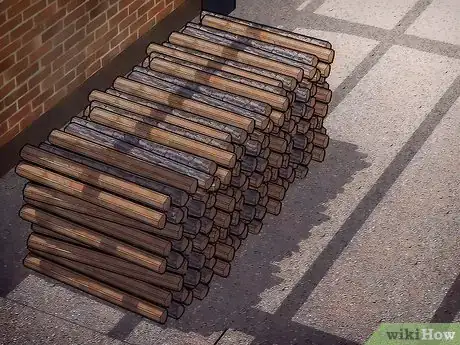
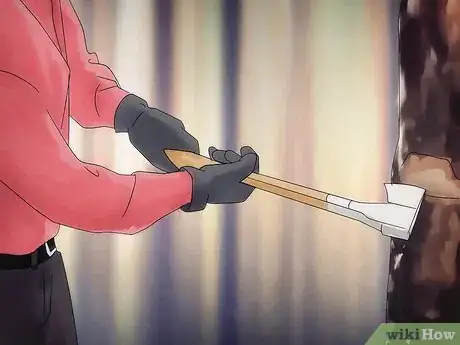



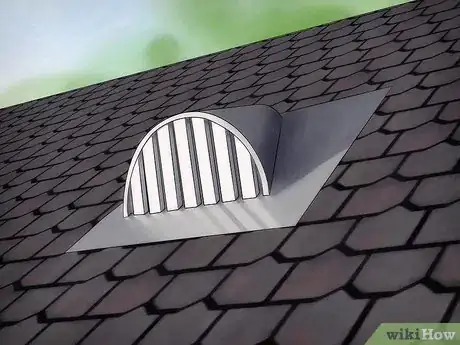



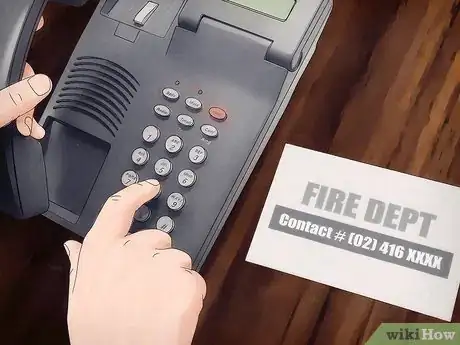




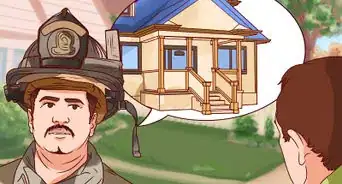


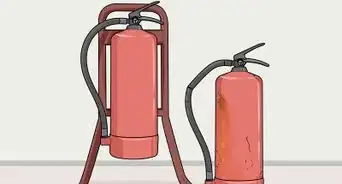





-Step-11-Version-2.webp)
